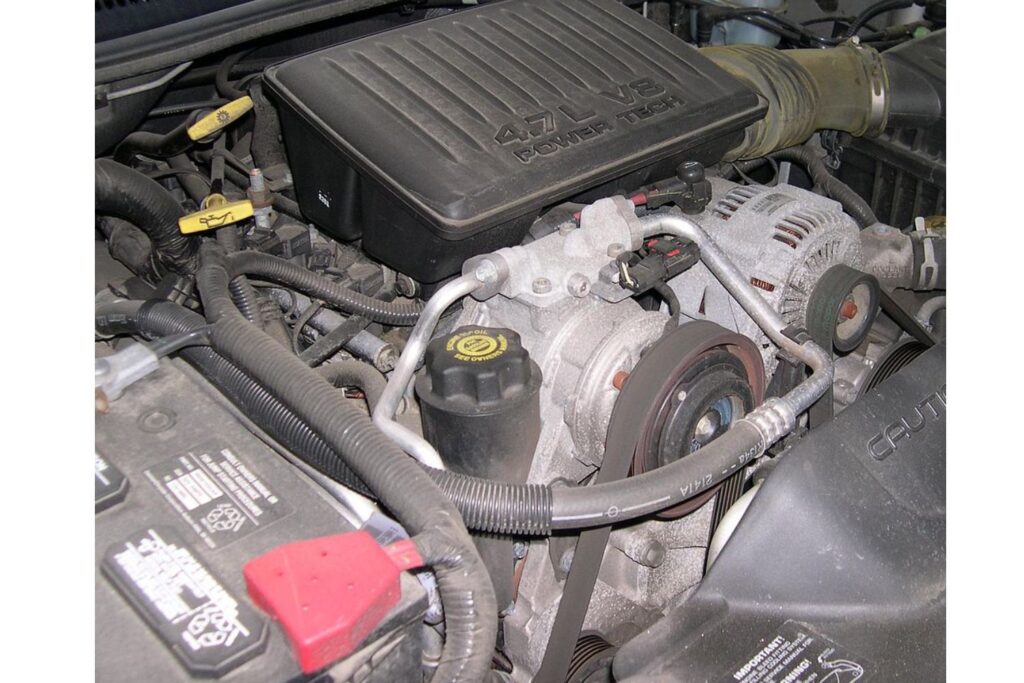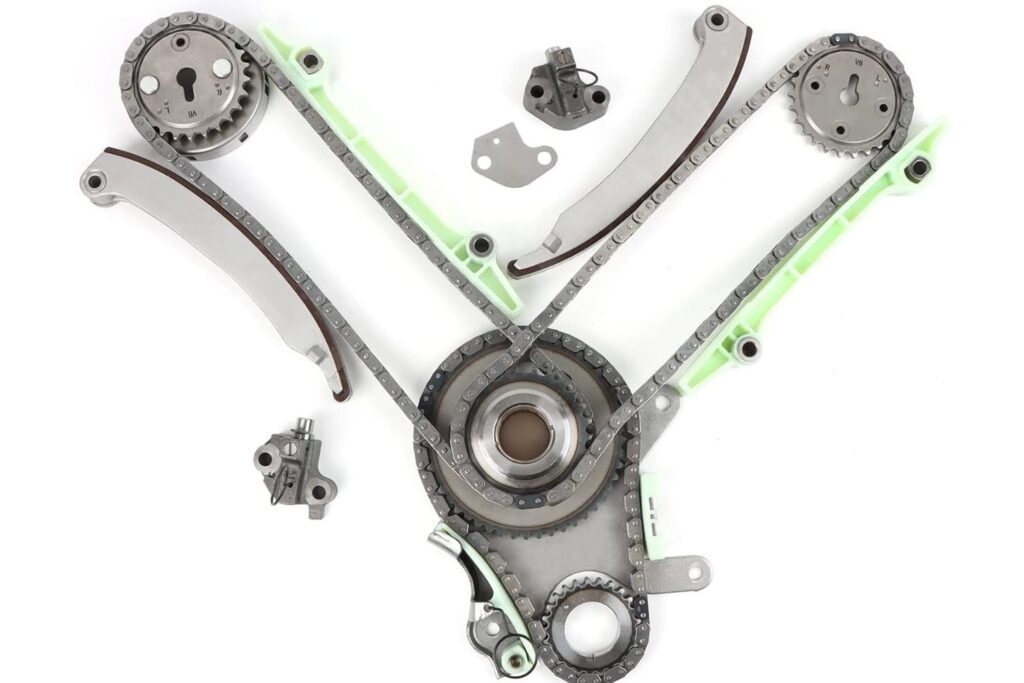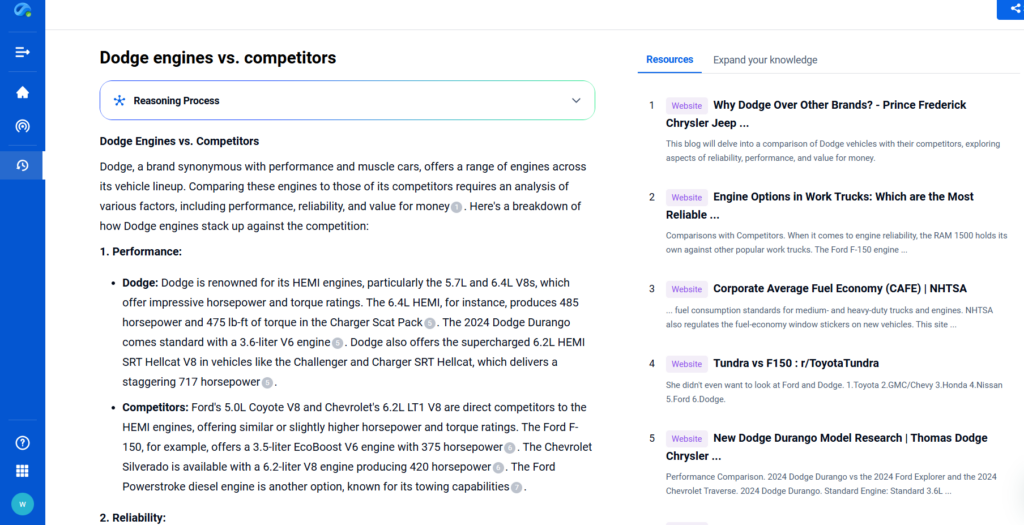
In the realm of automotive engineering, certain powerplants carve out a lasting legacy, and the 4.7 Dodge engine stands as a prime example. Debuting in the late 1990s, this V8 workhorse became a staple under the hoods of iconic Dodge trucks and Jeeps, bridging the gap between everyday usability and rugged performance. Whether hauling heavy loads in a Ram pickup or tackling off – road trails in a Grand Cherokee, it delivered a unique blend of torque, simplicity, and American – built toughness. As we dig into its story, we’ll explore how this engine defined an era of SUV and truck power, examining its design, evolution, and the role it played in shaping driver expectations for reliability and capability through PatSnap Eureka AI Agent.
What Is the 4.7 Dodge Engine?
TThe 4.7 Dodge engine, part of the PowerTech engine family, is a V8 engine known for its balance of power and fuel efficiency. It features overhead camshafts and multi-valve configurations, offering improved torque and horsepower compared to earlier models. It is designed to power SUVs and pickup trucks, providing robust performance and reliability. While specific recent innovations couldn’t be retrieved, the engine has been noted for its durability and has been widely used as a replacement engine in the secondary market.
Key Features
- Displacement: 4.7 liters (287 cubic inches)
- Configuration: V8, 16-valve SOHC
- Block & Head: Cast iron block with aluminum heads
- Fuel System: Sequential multi-port fuel injection
- Horsepower: 235–310 hp (depending on model/year)
- Torque: 295–334 lb-ft
These specs made the 4.7 a balanced option between power, durability, and serviceability.

Different Variations of the 4.7L Dodge Engine
Over its production life, the 4.7L V8 engine evolved through three major variants. Each brought significant upgrades in performance, emissions, and durability.
1. Standard 4.7 (1999–2007)
This was the original version of the 4.7L PowerTech V8.
- Horsepower: ~235–245 hp
- Torque: ~295 lb-ft
- Features:
- SOHC design with 16 valves
- Cast iron block and aluminum heads
- Sequential multi-port fuel injection
- Designed for balanced towing, daily driving, and durability
- Applications: Dodge Ram 1500, Dodge Dakota, Jeep Grand Cherokee
- Known for: Simplicity, reliability, and good serviceability
- Limitations: Lacked the performance tuning of later variants; some early models prone to oil sludge with poor maintenance
2. 4.7 High Output (HO) (2002–2008)
This performance-oriented variant improved responsiveness and torque.
- Horsepower: Up to 265 hp
- Torque: ~330 lb-ft
- Upgrades:
- More aggressive camshaft profile
- Reprogrammed ECU for faster throttle response
- Improved intake manifold for better airflow
- Higher compression ratio (9.3:1 vs. ~9.0:1)
- Applications: Jeep Grand Cherokee HO, select Dodge Ram and Dakota trims
- Ideal for: Drivers needing stronger acceleration or light-duty performance towing
- Notes: Despite higher output, shared many components with the standard version for parts interchangeability
3. 4.7 Next Generation (2008–2013)
This final generation introduced major mechanical and emissions updates.
- Horsepower: Up to 310 hp
- Torque: ~334 lb-ft
- Significant Changes:
- Higher compression ratio (9.8:1)
- Redesigned cylinder heads with larger valves
- Dual spark plugs per cylinder for cleaner burn
- Dual knock sensors for improved timing control
- Revised camshafts and intake/exhaust
- Enhanced emissions compliance
- Applications: 2008–2013 Dodge Ram 1500, Dodge Dakota, Chrysler Aspen
- Benefits: Smoother performance, better fuel efficiency, and reduced emissions
- Challenges: More complex electronics and tighter tolerances require better maintenance and diagnostics
Summary Table:
| Variant | Key Upgrades | Power/Torque | Years Used |
|---|---|---|---|
| Standard 4.7 | Original design, cast block, aluminum heads | ~235 hp / 295 lb-ft | 1999–2007 |
| 4.7 High Output (HO) | Aggressive cams, tuned ECU, better intake | Up to 265 hp / 330+ | 2002–2008 |
| 4.7 Next Gen | New heads, dual knock sensors, higher compression | Up to 310 hp / 334 | 2008–2013 |
Market Relevance & Competitive Positioning
The Dodge 4.7L V8 played a pivotal role in Chrysler’s engine lineup during the early 2000s. Designed to fill the gap between economy V6s and large-displacement V8s, it offered a well-rounded package of power, efficiency, and cost-effectiveness.
Strategic Position in Dodge/Jeep Lineup
- Replaced the aging 5.2L Magnum V8, offering similar torque with better emissions compliance and smoother operation.
- Slotted below the 5.7L HEMI, making it a cost-effective alternative for buyers who didn’t need maximum towing capacity.
- Found in popular models like the Ram 1500, Dakota, Durango, and Jeep Grand Cherokee—vehicles aimed at light-truck users, off-roaders, and suburban families.
Competitors in the Same Class
During its run, the 4.7L PowerTech V8 competed against several key rivals in the light-duty truck and SUV segment:
| Engine | Brand | Displacement | Power Output | Notable Traits |
|---|---|---|---|---|
| 4.6L Modular V8 | Ford | 4.6L | 231–292 hp | Smooth and durable, but less torque |
| 5.3L Vortec V8 | GM/Chevy | 5.3L | 270–320 hp | More powerful, but heavier and pricier |
| 4.7L i-Force V8 | Toyota | 4.7L | 245–282 hp | Refined and reliable, but costlier |
| 3.7L V6 / 4.0L V6 | Various OEMs | 3.7–4.0L | 200–240 hp | Cheaper, but lacked V8 torque and feel |

The Dodge 4.7 stood out for being:
- More affordable than Toyota and GM V8s
- Less complex than Ford’s SOHC/DOHC Modular architecture
- Easier to maintain for DIY users and mechanics
Market Strengths
- Mid-range Torque Focus: Ideal for towing light loads and moderate off-roading, giving it strong appeal among truck and Jeep buyers.
- Flexible Applications: Used across SUVs, pickups, and even some fleet vehicles.
- Strong Aftermarket: Continued demand for replacements has kept used engine sales and rebuild kits in circulation, even after its discontinuation.
Limitations & Market Challenges
- Emissions Pressure: Struggled to meet stricter emissions in California and other states in later years.
- Fuel Economy: Though adequate, it lagged behind smaller displacement V8s with modern fuel-saving tech (e.g., cylinder deactivation).
- HEMI Overshadowing: The more powerful and better-marketed 5.7L HEMI often drew attention away from the 4.7, especially after 2005.
Long-Term Positioning
Even though production ended in 2013, the 4.7L engine retains a niche following among:
- Used-truck enthusiasts
- Jeep off-road modders
- Budget-conscious engine swappers
- Fleet operators using high-mileage Dodge/RAM platforms
With platforms like PatSnap Eureka AI Agent, engineers and rebuilders can now benchmark the 4.7L’s lifecycle design, patent lineage, and component-level upgrades against modern alternatives—helping assess whether it still holds value in niche applications.
Innovation & Technology
Engine Design and Architecture:
- PowerTech Engine Brand: The 4.7L engine is part of Chrysler’s PowerTech engine family, which was developed to provide a balance of power, fuel efficiency, and reliability. The PowerTech engines are known for their advanced design features, such as overhead camshafts, multi-valve configurations, and electronic fuel injection. The 4.7L engine, in particular, was an upgrade from the 3.7L V6, offering more power and torque for larger vehicles like SUVs and pickup trucks.
- Jeep Technology Influence: The 4.7L engine was created using Jeep technology, which was primarily used in the Jeep Cherokee. This technology was then adapted for use in other Dodge vehicles, such as the Durango, Dakota, and Dodge Ram, to provide different torque and power options for drivers. The 4.7 series created by Chrysler for use in Jeeps was an upgrade to the PowerTech 3.7 V6.
- Hemi Engine Design: The Hemi edition engines produced by Chrysler for its Dodge vehicles are one of the new brands carried for sale at the Auto Pros USA website. The Hemi motors for sale are now under a new structure in price and are one of the recent improvements to the preowned inventory offered. A change in price for other Chrysler-created motors was announced at the start of this month.
Performance and Efficiency:
- Power and Torque Output: The 4.7L engine is a V8 motor that provides more torque and power for drivers compared to the 3.7L V6. The V8 motors that are now produced are able to conserve fuel without degrading the horsepower compared to motors produced in earlier decades.
- Fuel Efficiency: Dodge has benefited from the Jeep technologies that are often shared due to the ownership of these brands by Chrysler. The V8 engines in the Dodge family are some of the strongest available in the past two decades.
Reliability and Durability:
- Longevity: The 4.7L engine has been used since the year 2000 and remains a popular replacement type for secondary market vehicles. These motors have remained in use for over a decade in millions of vehicles.
- Warranty Programs: The warranty program now in place by Motor Universe is designed for protection across all the company brands. Each automaker that builds a motor supplies an OEM warranty protection plan. This warranty is typically the first policy used for repairs if the problem happens after the vehicle is sold. The new two-year protection recently created by this company is designed to bring more coverage to buyers. The wear and tear production as well as breakdown coverage is unique to this company. The additions of more engine types has caused this company to extend its terms of warranty protection. These new terms are helping the preowned units that are sold in stock to be protected from damage or other sudden breakdown after customer installation.
Availability and Affordability:
- Aftermarket Support: Motor Universe now sells the Dodge 4.7 engine directly to pickup truck owners and buyers looking for preowned replacements. The company recently launched a new discount on this engine series to attract more customers. Auto Pros USA has also added used Dodge 4.7-liter engines to its online inventory. Buyers can now search, compare, and order these engines through the website. The company is actively expanding inventory options with this online sales push. Got Engines is now offering discounted prices for used 4.7L Dodge engines. This deal helps SUV owners and installers find budget-friendly replacement units online.
- Pricing and Availability: Customers can now get instant pricing on engines from Dodge, Ford, Chevy, Chrysler, Plymouth, Honda, Toyota, and more—all available online. A toll-free number remains open for those who prefer speaking to a rep before purchase. Auto Pros USA has streamlined its pricing system. Instead of waiting for offline quotes, users now receive fast, accurate pricing online. The new digital system has increased quote volume significantly this year. Online research is now easier. The searchable inventory displays real-time prices and shipping details in every quote. This shift answers common customer questions without needing a phone call. Got Engines has also implemented a real-time quote tool. It ensures that both trade professionals and vehicle owners can access pricing instantly—no delays, no guesswork.
How PatSnap Eureka AI Agent Helps
Using Eureka, you can:
- Compare patents and engineering blueprints for Dodge engines vs. competitors
- Analyze material specs in cylinder heads, valves, and seals
- Track emission compliance and thermodynamic modeling across different model years
- Identify design evolutions from the Magnum era to PowerTech V8s
For product engineers or aftermarket developers, Eureka delivers competitive insights at component level, improving decision-making and design.

Conclusion
The 4.7 Dodge engine may no longer be in production, but its engineering legacy remains strong. With reliable power delivery, smart updates over time, and competitive simplicity, it was one of Dodge’s most versatile V8s. Moreover, the Dodge 4.7L engine represents more than just a transitional powertrain—it’s a case study in practical engineering that met real-world needs for over a decade. Its story, performance data, and innovation path remain highly relevant for those in the engine design, diagnostics, and automotive aftermarket industries.
FAQs
Q: Is the 4.7 Dodge engine reliable?
A: Yes, especially with regular oil changes and cooling system maintenance. Later models fixed many early issues.
Q: What are common problems with the 4.7 engine?
A: Overheating due to poor coolant maintenance and sludge buildup if oil changes are skipped.
Q: Can the 4.7 engine be rebuilt or upgraded?
A: Absolutely. Many aftermarket kits support performance rebuilds, especially for the HO variant.
Q: Is it worth swapping into other vehicles?
A: It can be, due to its compact design and solid torque curve—but custom mounts and wiring are required.
To get more detailed scientific explanations of the 4.7 Dodge engine, try PatSnap Eureka AI Agent.

